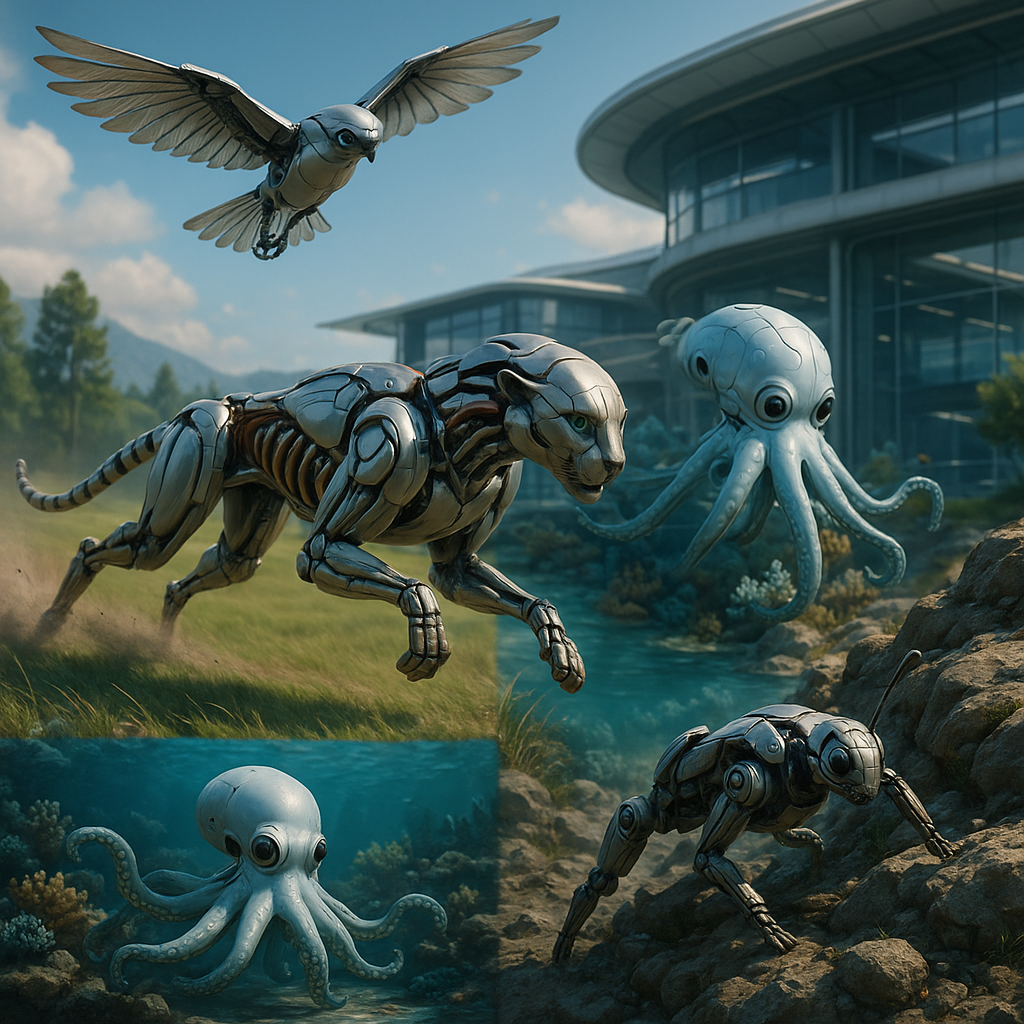Nature’s been coming up with new ideas for millions of years — and now engineers are taking a closer look. Copying how animals and plants work is changing robot design. By learning from nature’s best parts, we can build machines that move better, think smarter, and handle real-world problems more.
What Is Biomimicry?
Biomimicry means using nature’s ideas to fix human problems. For robots, this means building machines that act like living things. Think about how birds fly, fish swim, or bugs crawl — these natural movements give ideas for robot designs that work well and can adapt.
Why invent new ways for a robot to move when we can learn from a cheetah’s run or a snake’s slither?
Why Engineers Look to Nature for Ideas
Nature has already cracked the code on how to survive, move, and adapt in tricky environments. Animals have developed remarkable features like:
- Productive movement
- Tough yet light structures
- Fast reflexes
- Ways to save energy
By examining these natural systems, engineers can create robots that need less power, move more , and handle bumpy or rough ground better.
Real-World Robots Inspired by Nature
Here are some neat examples of how nature has sparked ideas for modern robots:
🐟 Fish-Like Robots
These robots swim through water like actual fish. They excel at exploring underwater areas, checking pipelines, or monitoring coral reefs without disrupting the environment.
🐕 Robot Dogs
Taking cues from animal movement, robot dogs such as Boston Dynamics’ “Spot” can walk, run, climb stairs, and even transport gear. Construction sites, factories, and emergency responders already use them.
🦎 Wall-Climbing Robots
Geckos climb walls using sticky pads on their feet. Engineers copied this idea to create robots that scale glass and smooth surfaces — handy for cleaning buildings or examining structures.
🐝 Insect Drones
Small flying machines that copy bees and dragonflies work great to do jobs in tiny or risky places — like finding gas leaks looking through fallen buildings, or helping crops make fruit.
Why Robots That Copy Nature Work Better
Imitating nature doesn’t just look cool — it helps robots work better. Here’s how:
- Saving Power: Like animals, these nature-based robots can move using less energy.
- More Bendy: They can twist and turn in ways normal machines can’t.
- Smarter Movement: Designs based on nature help robots sense and avoid things more like living things do.
- Works Anywhere: From deep oceans to outer space, copying nature helps robots fit in different places.
Challenges That Still Exist
Biomimicry sounds great, but it faces some obstacles:
- Hard to Copy: Some animal movements or behaviors are complex and tough to replicate.
- Pricey Materials: Building flexible, animal-like structures can be more expensive.
- Tricky Programming: Teaching a robot to behave like an animal often needs cutting-edge software and AI.
But thanks to ongoing studies, these roadblocks are becoming easier to tackle.
The Future of Nature-Inspired Robots
As robotics keeps growing, we’ll see more advanced machines that resemble and act like animals. These future robots might help:
- Save lives when natural disasters strike
- Study the deep sea or venture into space
- Help in hospitals and care for older folks
- Work on farms, in factories, and other places
Looking at nature’s designs is teaching us that they’re not just pretty – they’re super helpful too.
